Looking Back at the Evolution of the Indy 500
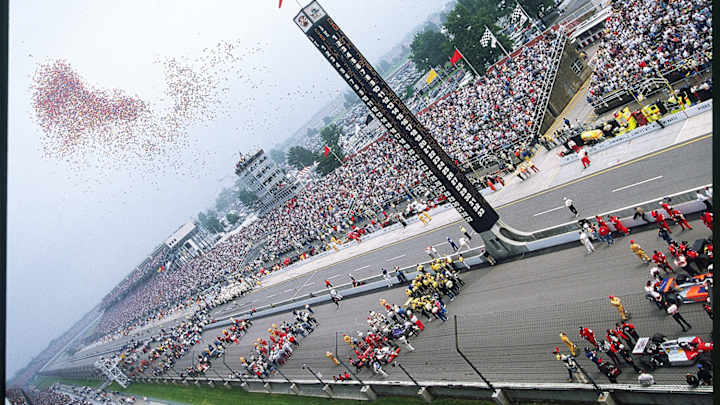
Looking Back at the Evolution of the Indy 500
1911
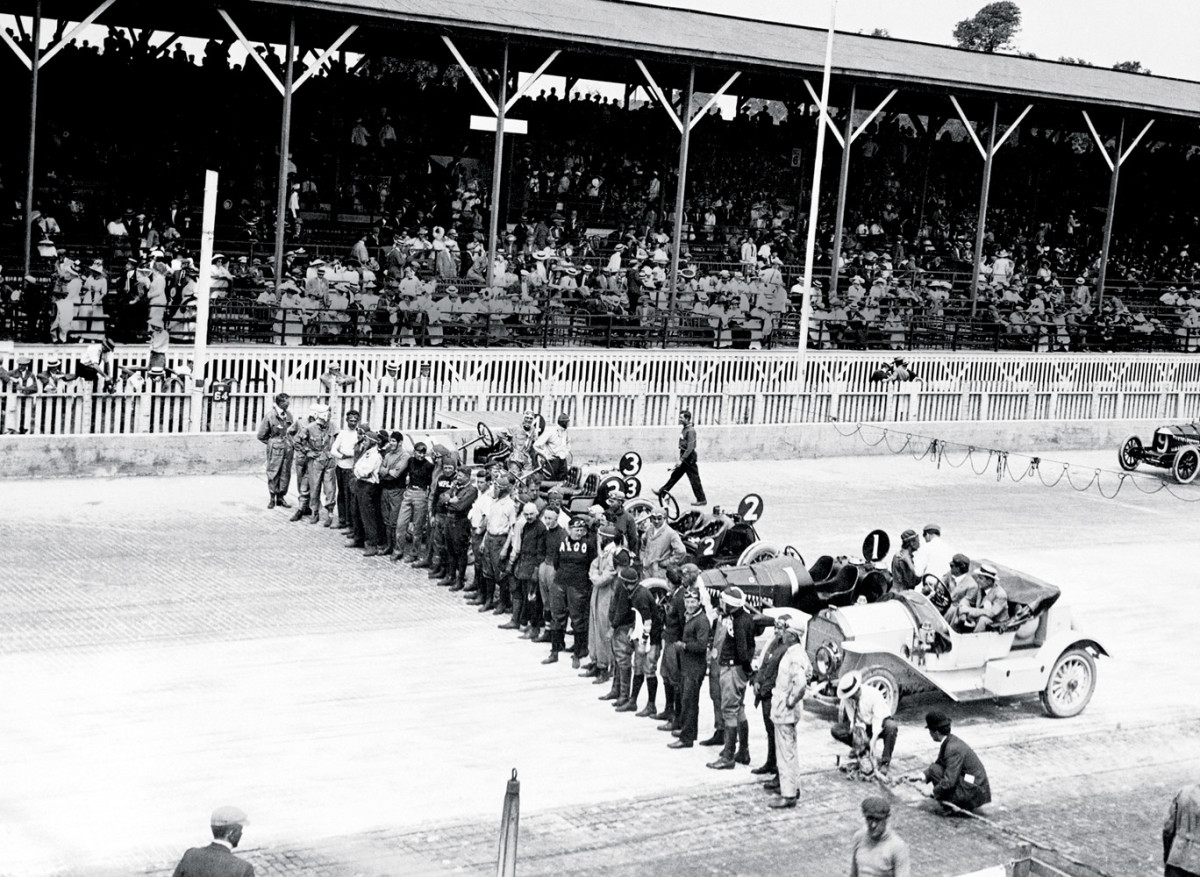
The lineup for Indy's first 500-mile race was led by a convertible pace car (lower right). The photographer? Yes—it's Mr. Henry Ford.
1913 - Where there's a Will...
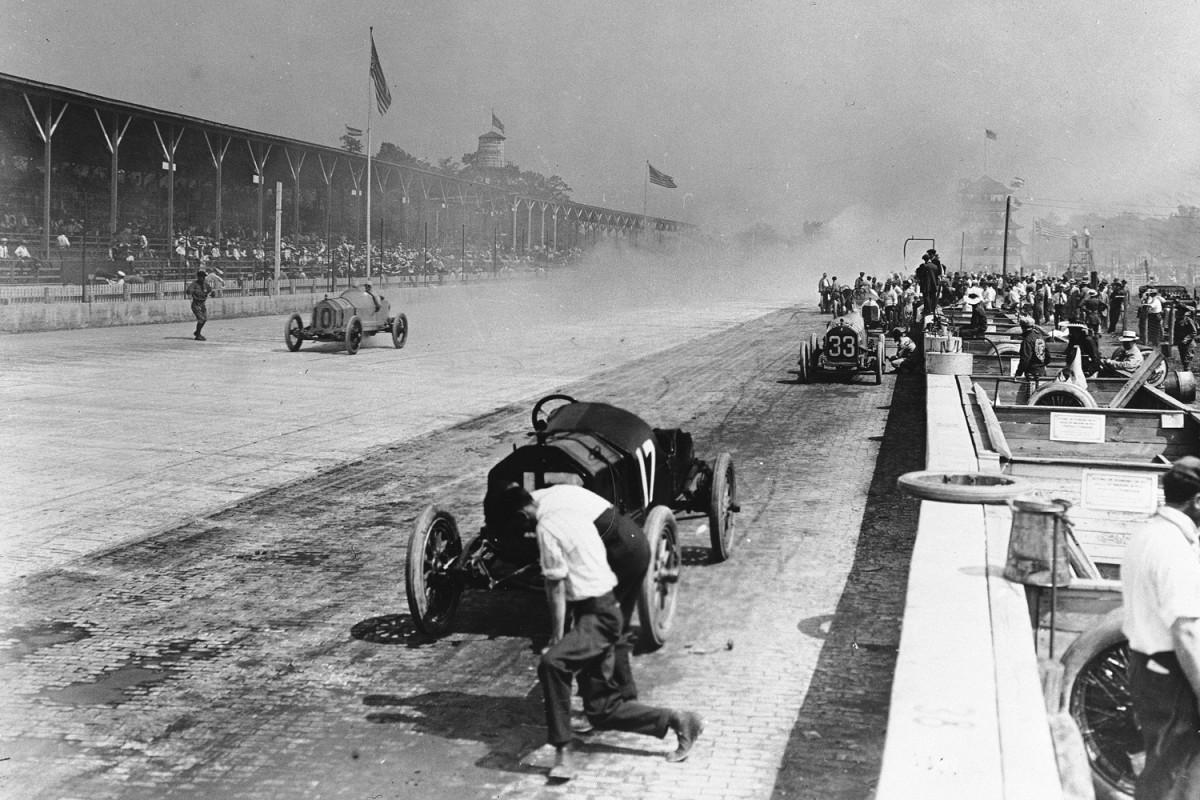
Billy Knipper (10) passed Billy Liesaw (17) and Bill Endicott (33) as they pulled over to pit. Liesaw, though, wound up the fastest of the Billys, finishing 14th.
1923 - Calm Before the Vroom
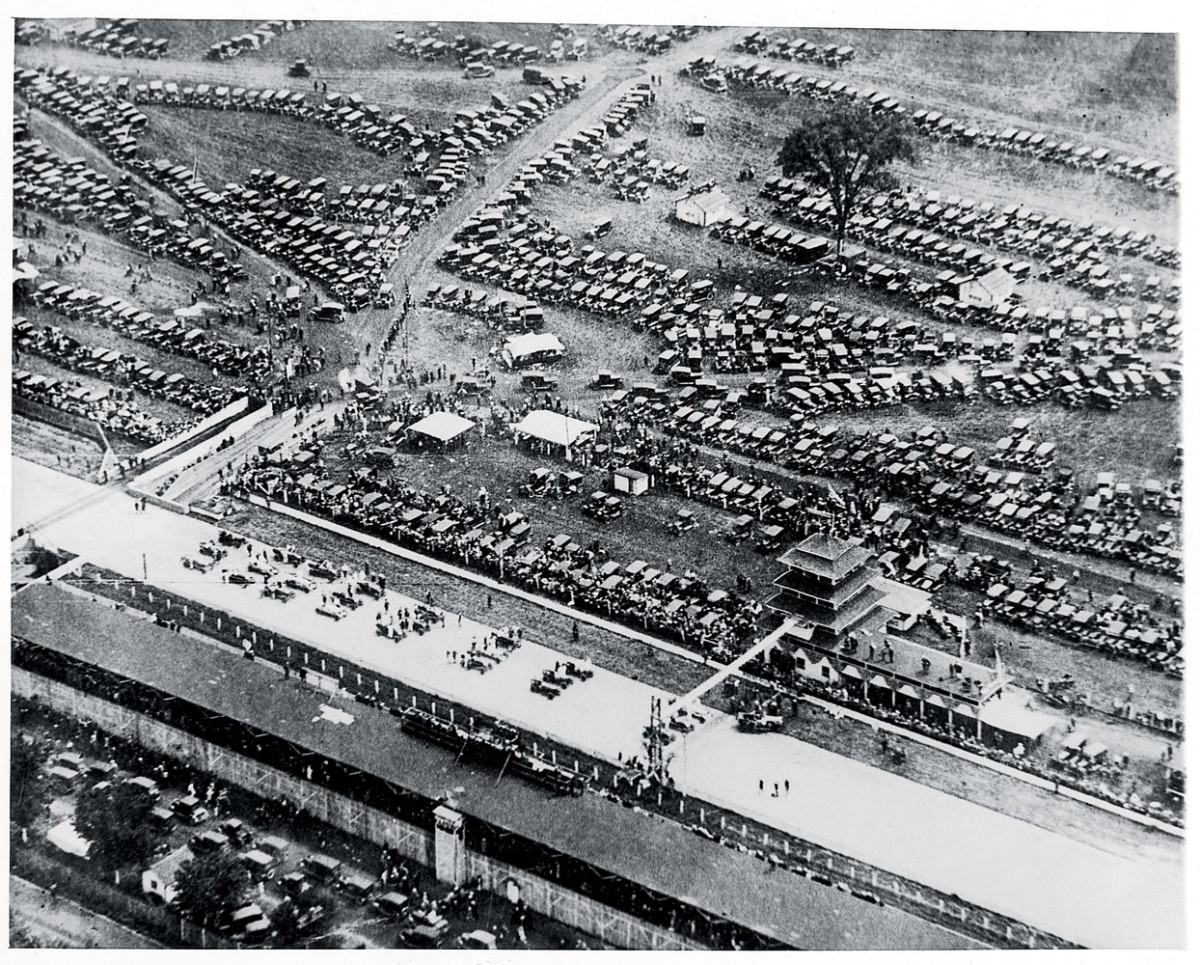
Fans were still milling around their own cars in the infield as pole sitter Tommy Milton led the field past the starting line.
1926 - Circling the Bricks
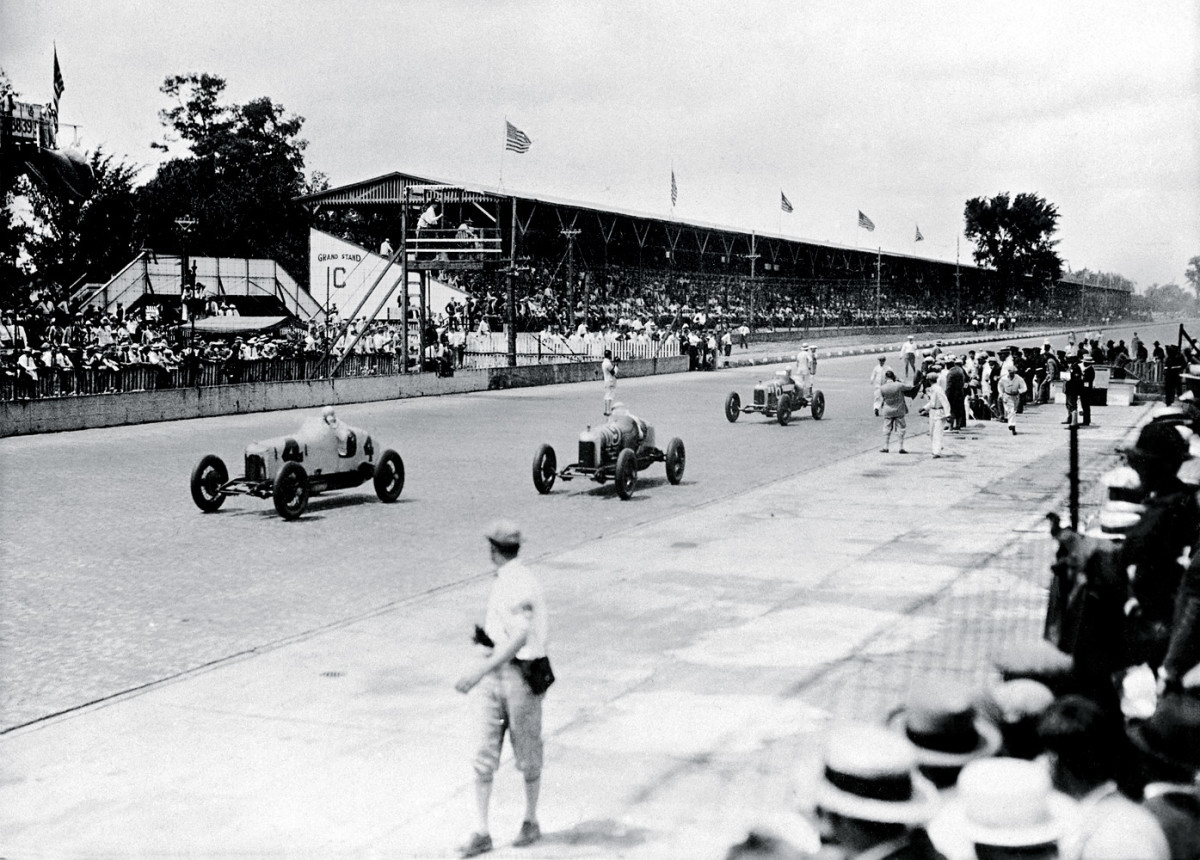
The track isn't the only place to find cars during a race: In the Roaring '20s fans parked their Model T's in the infield. Back then the racing surface exposed a while lot more than a yard of bricks-repaving in asphalt was still a decade away, as was swigging dairy for champs. Rookie Louis Meyer, who would later start the ritual when he became the 500's first three-time winner, was a milkless victor in '28.
1931
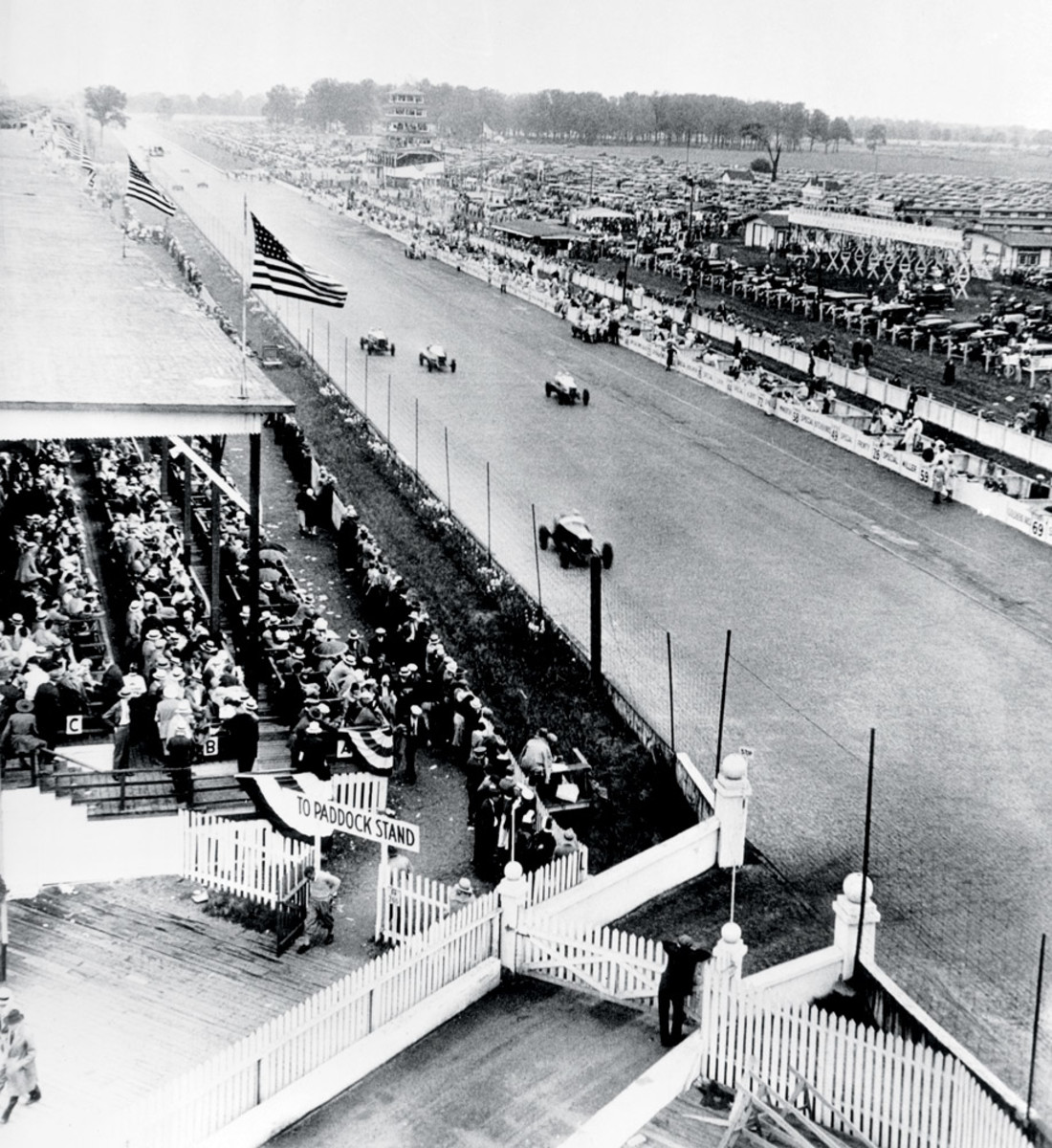
The "paddock" overlooked this straightaway, and in a messy race Billy Arnold broke an axle, Wilbur Shaw went over a wall and Louis Schneider won.
1938 - The Checkers Stand Alone
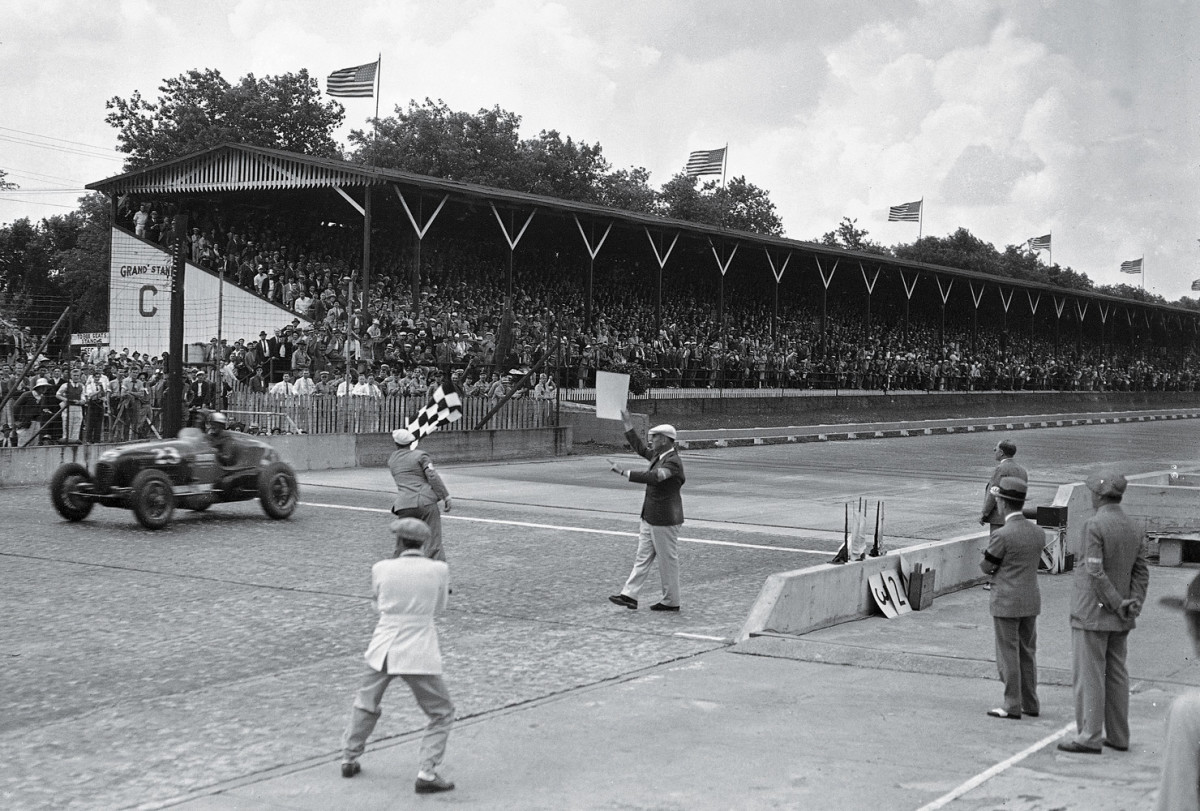
With no traffic to challenge Floyd Roberts at the finish, the started signaled his victory while moving safely toward the middle of the track.
1948
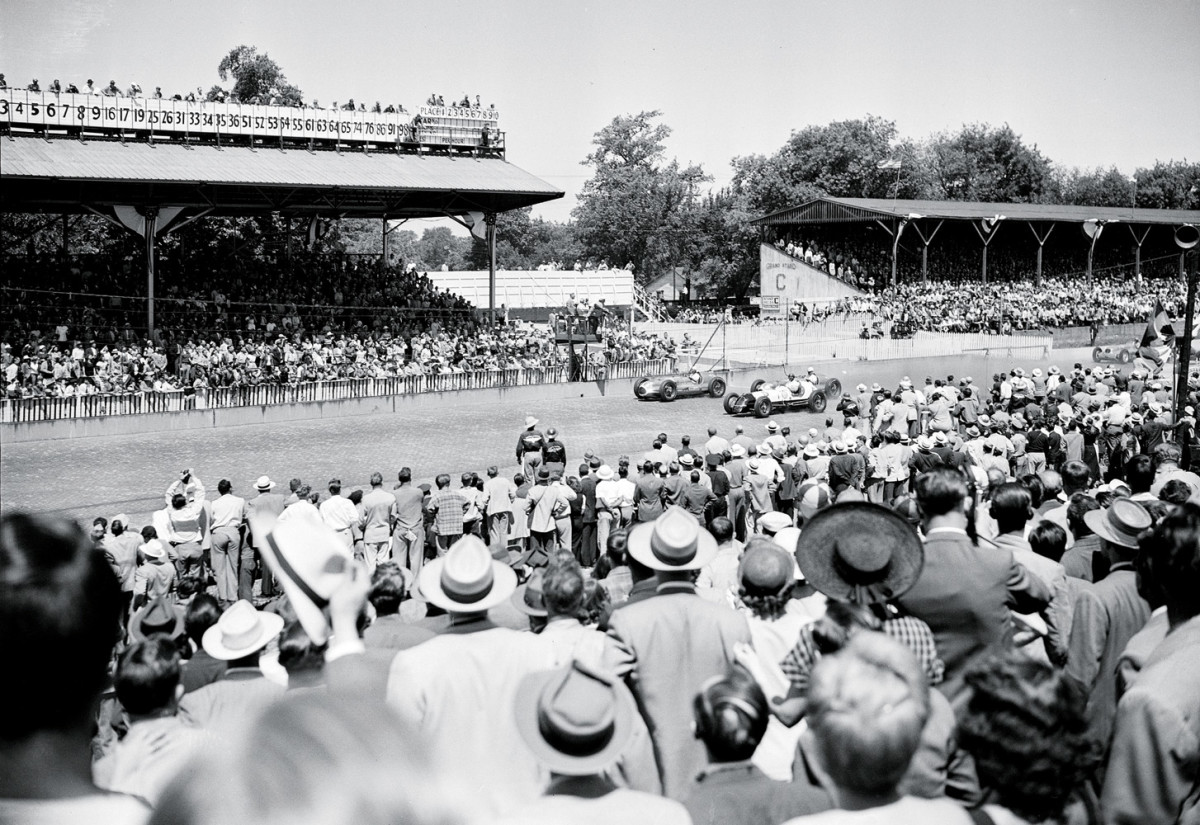
Crowds came out in full force (as well as in full headgear) and saw Mauri Rose win his third, and last, 500. Rose's car is far left at the starting line.
1949
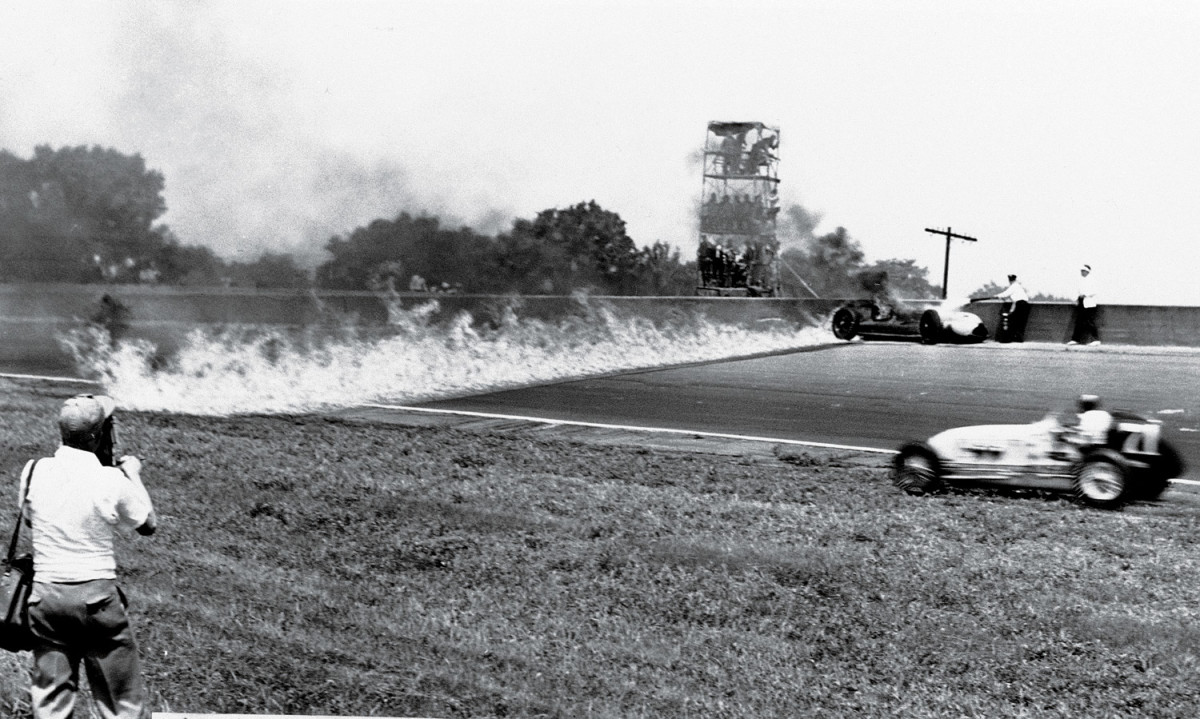
Norm Houser took an infield detour to dodge the trail of fire left by Duke Nalon's crash into the retaining wall. Nalon's injuries knocked him out of racing for two years.
1952-59 - It's What's Inside That Counts
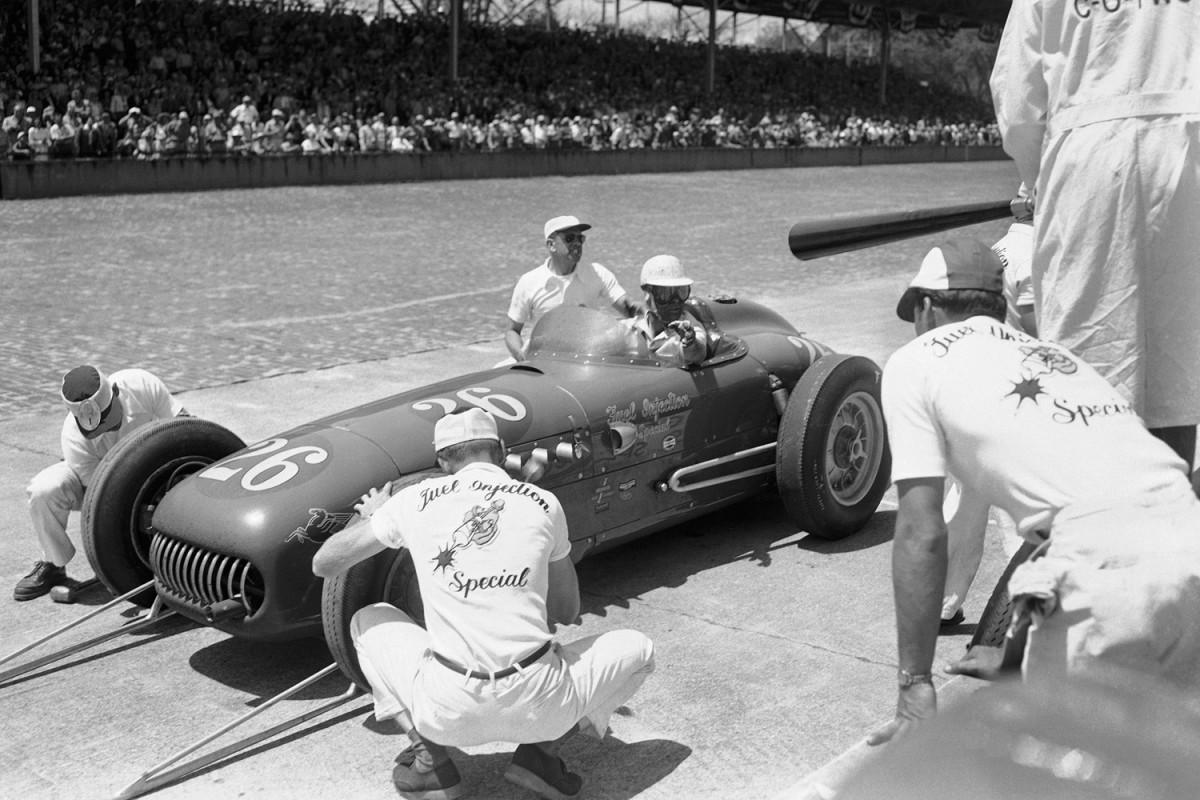
The chassis were different, but the engines remained the same. Troy Ruttman and Rodger Ward pitted a 1952 Kuzma and a '59 Watson, respectively, to tune up their Offys, while Sam Hanks, behind the wheel of a Salih in '57, safely revved his around a retaining all. Another thing they all had in common: They won their races.
1957
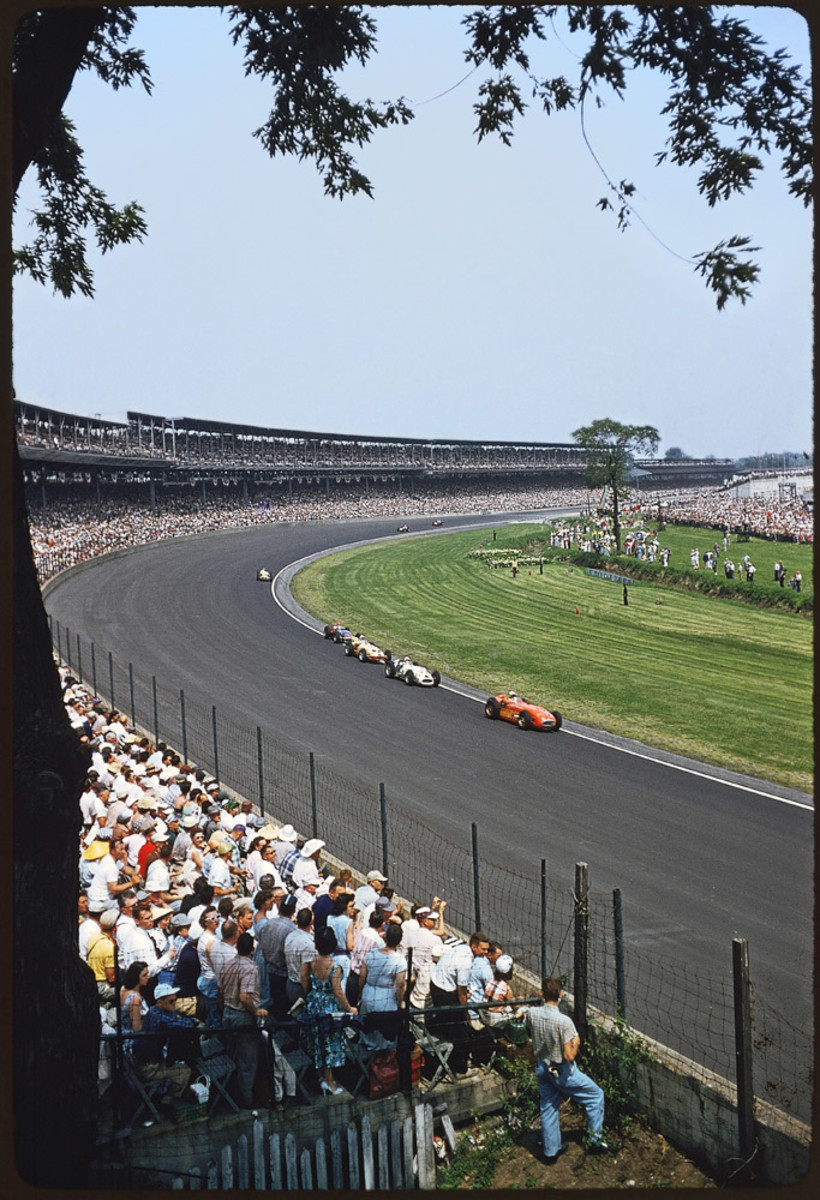
Despite the high casualty rate on the track crowds continued to turn out, enthralled by the ever-increasing speeds of roadsters roaring round the bend.
1964 - Times Are A-Changin'
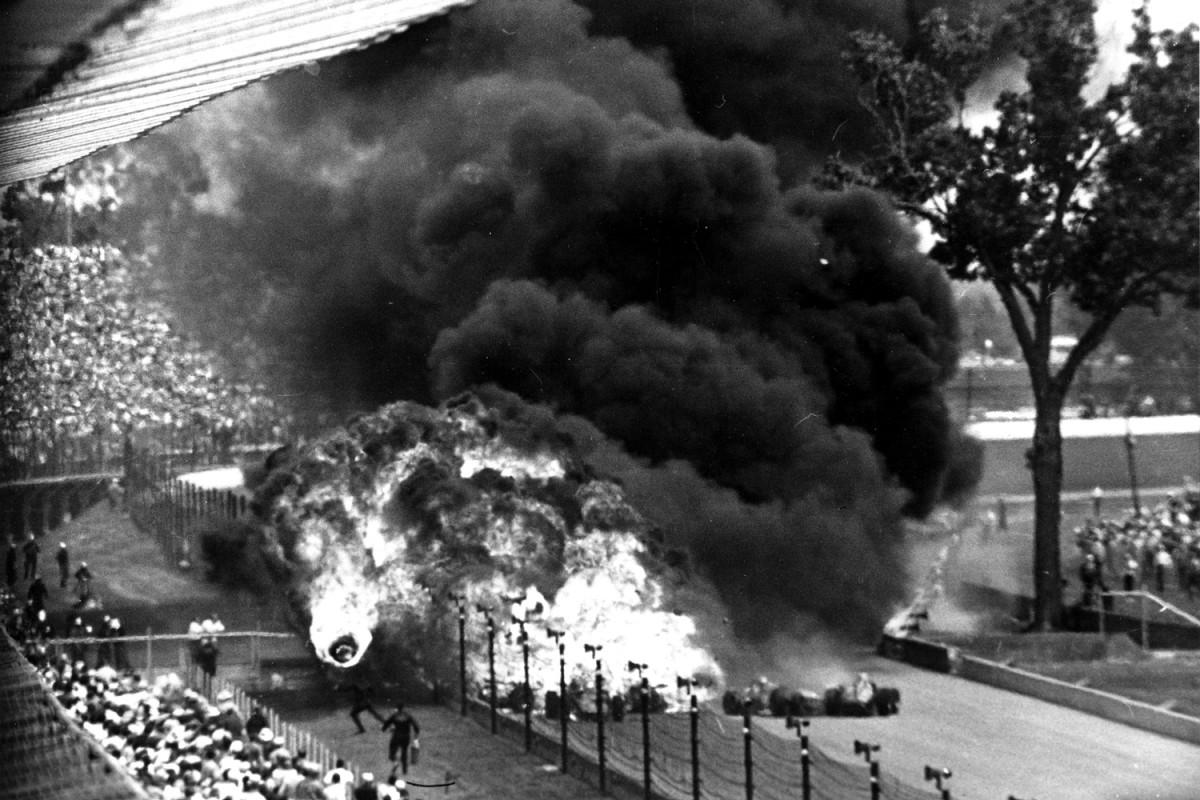
Black clouds of gloom hung over the Speedway after the deadly '64 crash, the first time the Indy 500 was halted for an accident. The second was two years later, when no one died, but rookie Jackie Stewart endured heartbreak; he led 40 laps before late mechanical failure ended his title hopes.
1969
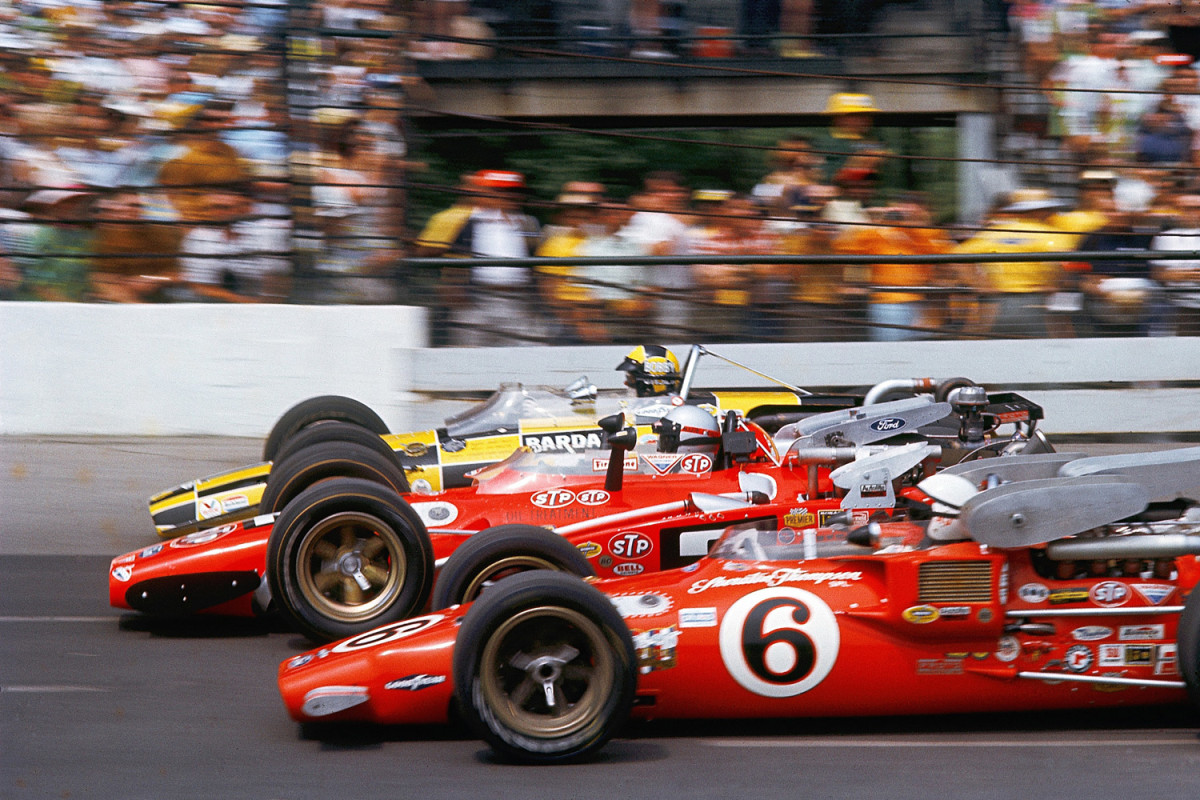
Although he was flanked by past winners Bobby Unser and A.J. Foyt (6) at the start of the race, Mario Andretti prevailed to take his first and only checkered flag.
1973 - A Career Cut Short
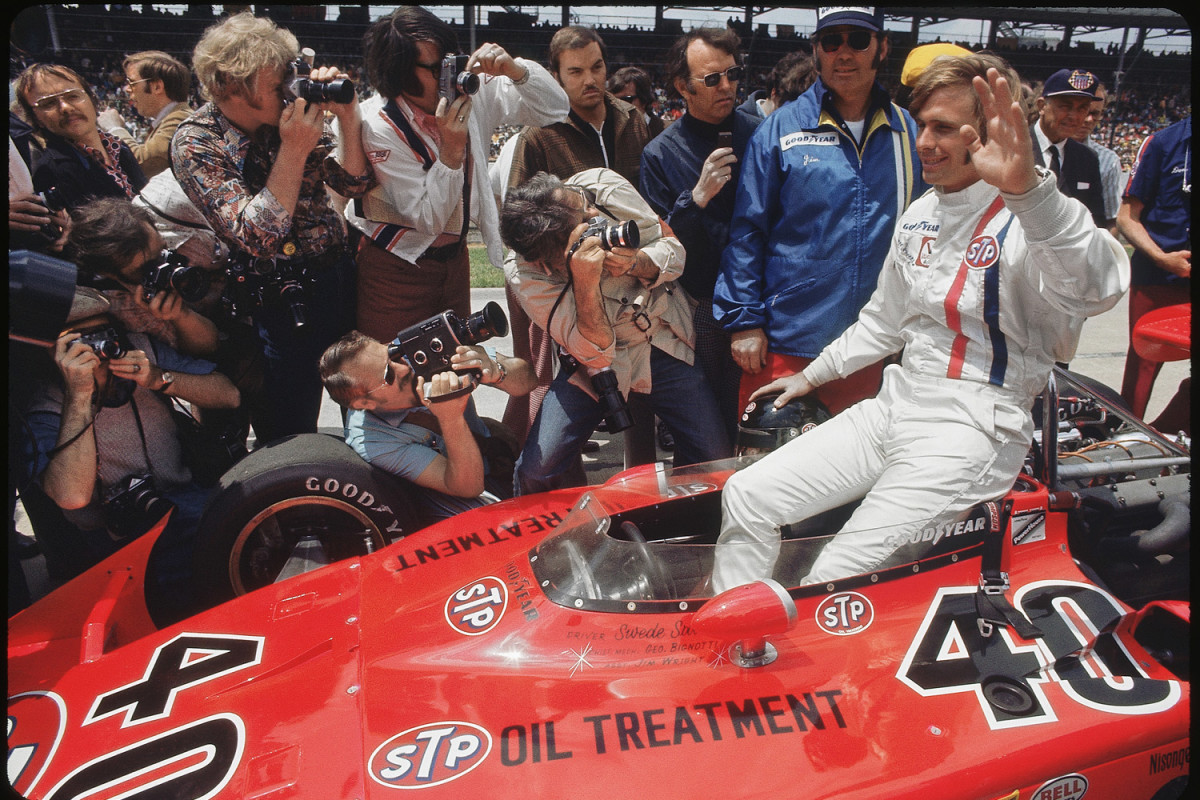
Swede Savage was already a darling at Indy, a sunny 26-year-old out of California with loads of speed. He had driven his Eagle-Offenhauser to a qualifying record of 196.580 mph when these photographers descended. Two weeks later, in the 500, Savage was battling for the lead and carry a full tank of gas when he crashed into the inside wall and was thrown, engulfed in flame, across the track. He died 33 days later.
1975
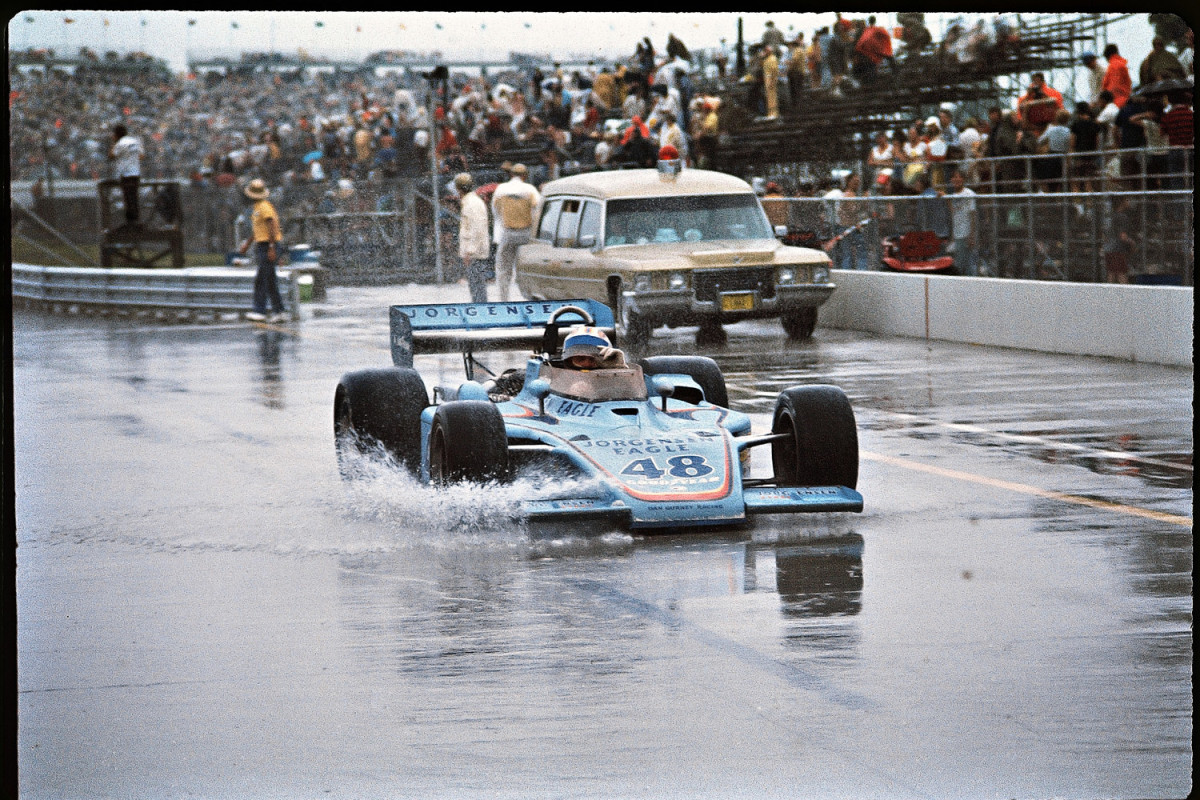
Not to be outdone by Al's two titles, Bobby nabbed his splashy second victory after he was leading on the 174th lap and the race was declared over on account of rain.
1984
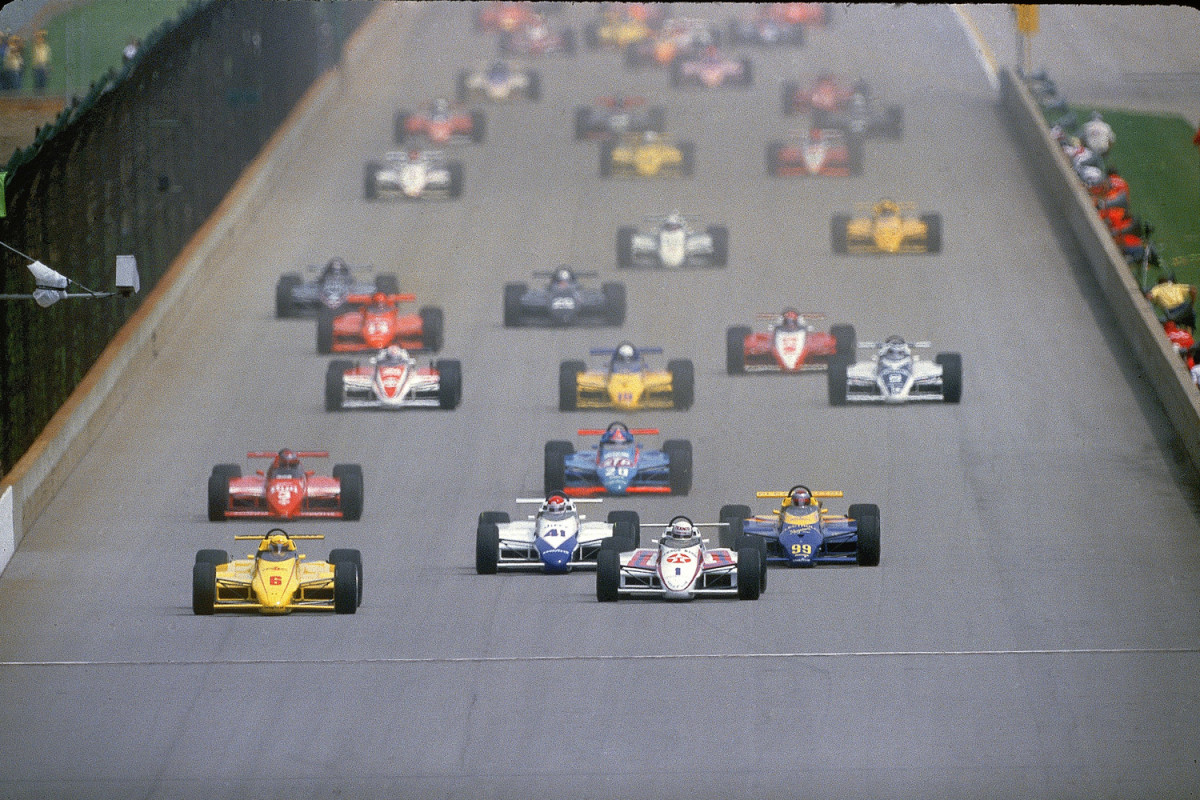
Starting from the third position, Mears (6) led the field fro 119 of the 200 laps, his only Indy victory that did not start from the pole. He won a record six poles at Indy.
1987
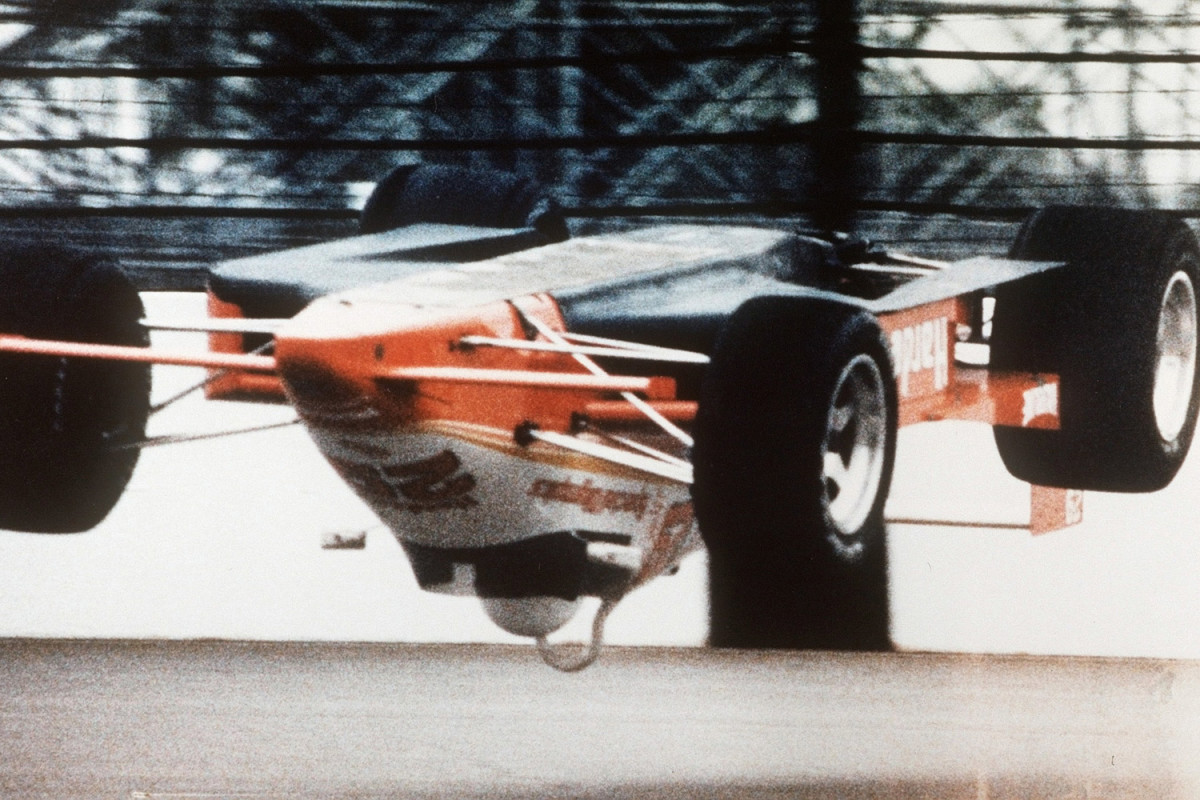
Pancho Carter flipped head over tailpipe in practice, sliding on his head for more than 800 feet. Uninjured, he raced (with a new helmet) three weeks later, finishing 27th.
1996 - A Time of Turbulence
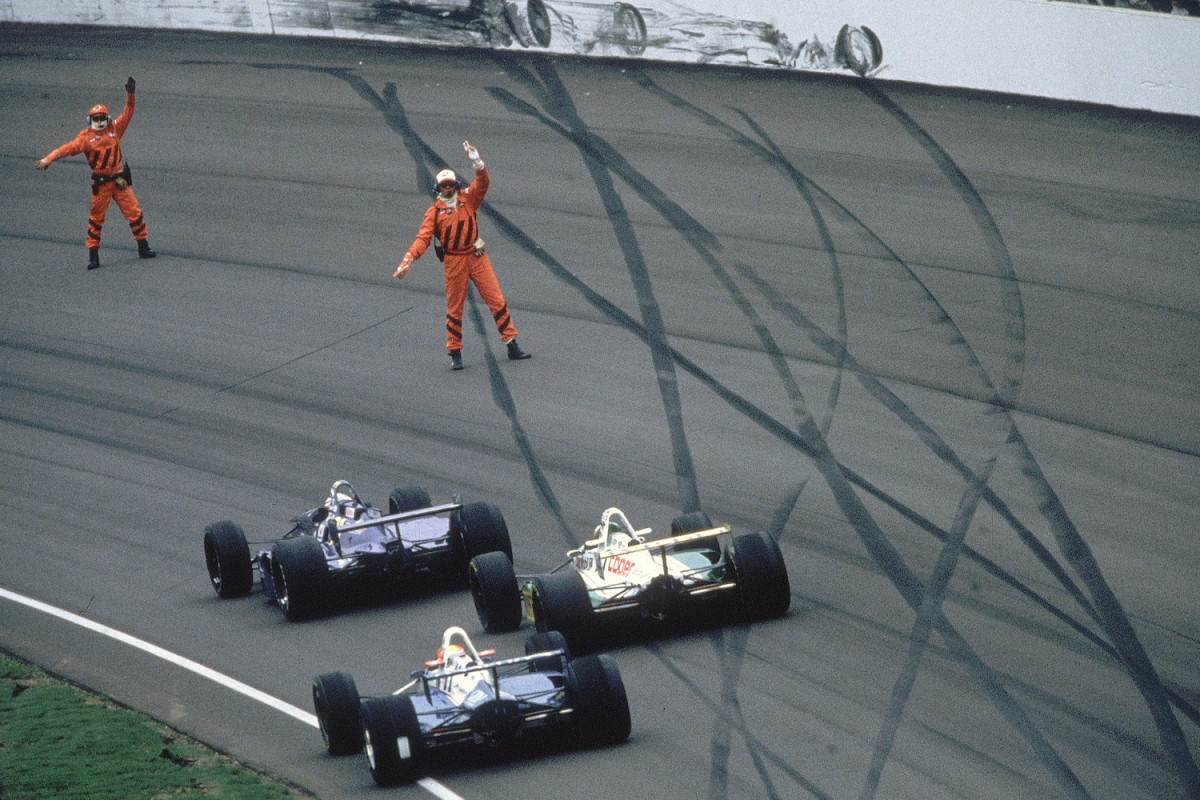
Boycotted by many drivers, the first postsplit 500 retained some golden rules-slow down to avoid debris and don't follow the rubber to the wall.
1998 - A Feeling in the Air

The annual tradition of getting the 500 underway by releasing some 30,000 helium-filled balloons (just as the last note of Back Home Again in Indiana is sung) presaged a paradoxical race. It was once full of no-names (many top drivers were in CART) and incomparably rich. The biggest chunk of the record $8.7 million purse went to winner Eddie Cheever Jr., who came from the 17th position for his only 500 victory.
2001 - What a (Bas-) Relief
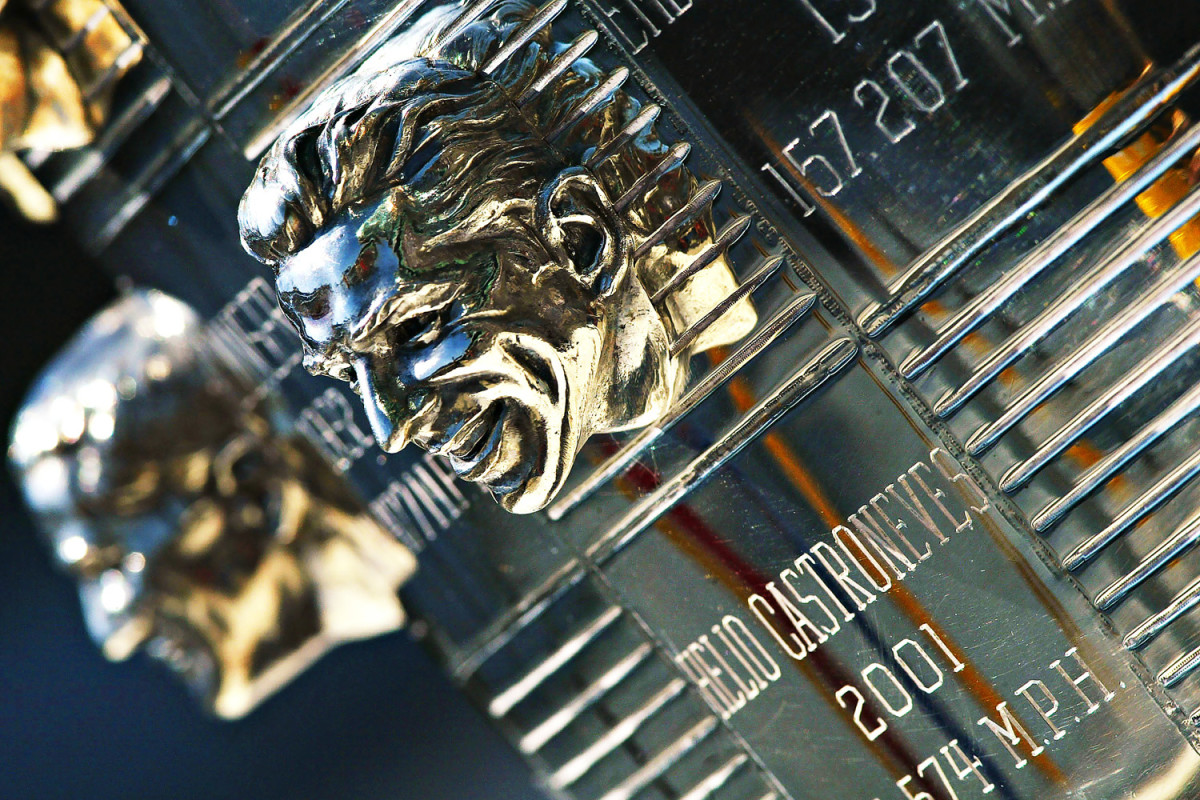
When Helio Castroneves became the eighth rookie to win the 500, his smiling mug was immortalized in sterling silver alongside every winner since 1936. The 75-year-old Borg-Warner Trophy weighs around 110 pounds and stands about 5' 5", so it's no small thing to hoist. It's also valued at $1.5 million, a nice sum but not as valuable as winning the Indy 500: That, as any driver would say, is priceless.
2005
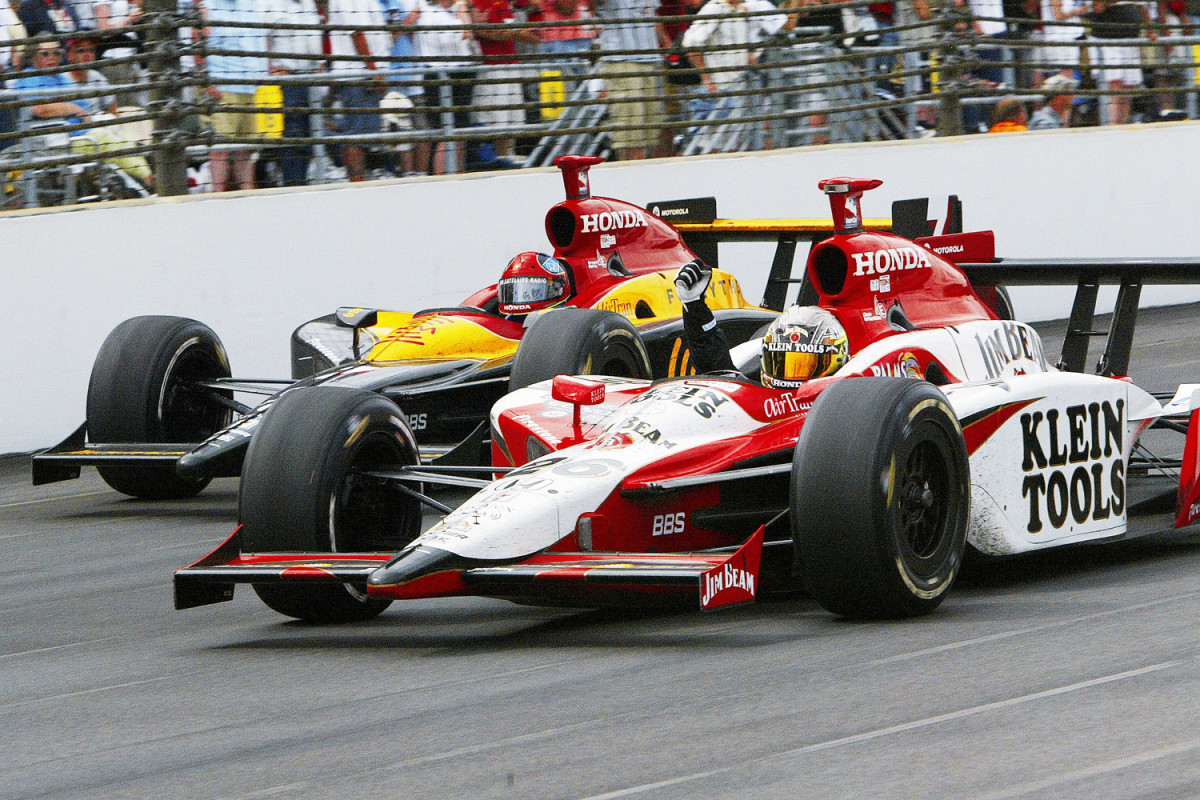
Dan Wheldon, shown here, won the Indy 500 in 2005, marking the first time an Englishman won the storied race since Graham Hill's victory in 1966. In 2011, Wheldon tragically lost his life in a 15-car accident at the IZOD IndyCar World Championship at Las Vegas Motor Speedway.
